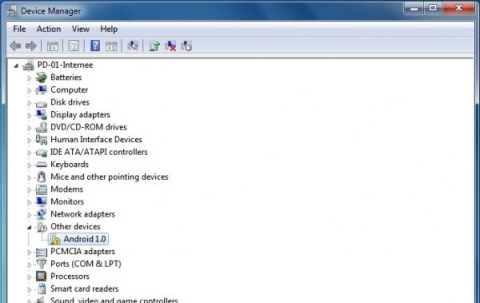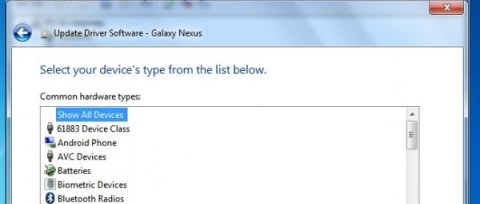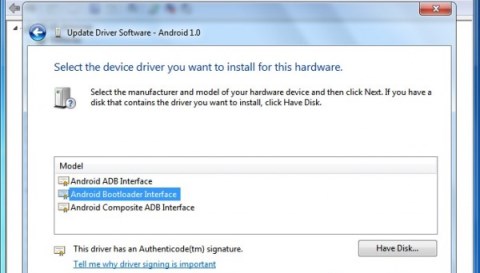How to Set Up Fastboot with Android SDK on Windows 7 & 8: Android SDK brings with itself the two most important tools needed for tweaking your Android phone, ADB (Android Debug Bridge) and Fastboot.
Why do we need them? ADB and Fastboot helps us install a custom recovery, which allows us to root Android devices, install custom ROMs and perform many other system tweaks which are not otherwise possible.
We always recommend you that the Android USB Drivers properly installed and Android phone should be working perfectly fine with ADB and Fastboot.
Recommend: Download Android USB Drivers for Windows And Mac OS X
Let’s get start the set up of Fastboot for your Android phone so that you never have to go through USB drivers issues again when trying out a custom firmware.
How to Set Up Fastboot with Android SDK
Follow this step-by-step instructions to set up Fastboot on your computer. Follow the steps carefully and make sure you read the tutorial once before actually performing it.
Pre-requisits:
- An Android phone.
- A microUSB DATA cable
- A computer (PC or Laptop)
- Android USB Driver for Computer (Follow above link For Drivers for your smartphone)
- Android SDK Manager **
- ADB (Android Debug Bridge)***
** Important! If you do not have downloaded and install Android SDK Manager, you can Follow this post Download And Install Android SDK with USB Driver.
*** Important! Follow this post: How to Set Up ADB (Android Debug Bridge) with Android SDK on Windows
NOTE: Before the installation of Fastboot, You must have Set Up the ADB (Android Debug Bridge) on your PC or you will be failed to install the fastboot. See above link for instructions.
After installing the ADB, you can be used anytime you want to install tweaks or perform ADB commands.
We have all the Android files, Drivers and Tools needed. Noe proceed on setting up ADB. How to use the downloaded USB drivers to set up Fastboot.
NOTE: Fastboot USB drivers may be different for other Android phones. Bootloader should be unlocked. If you are unsure, Search Google this up for your phone.
Step 1 – Make sure USB debugging Mode is enabled on your phone. How? See here: How To Enable Android USB Debugging Mode.
Step 2 – Disconnect your Android phone from the USB DATA Cable and turn it OFF.
Step 3 – Go to Bootloader / Fastboot mode now. How? Press and hold these buttons together: Volume Up + Volume Down + Power. Hold them till you see the Bootloader / Fastboot mode.
Step 4 – Connect your Android phone to the computer and wait till your PC installs all the drivers it could. Most of the drivers would fail to install.
Step 5 – Go to Start -> Control Panel -> System -> Device Manager. In the list, you will see Android 1.0 or something like this.
 Step 6 – Right-click on it, and select Update Driver Software. Select the Browse my computer for driver software.
Step 6 – Right-click on it, and select Update Driver Software. Select the Browse my computer for driver software.
Step 7 – Select the Let me pick from the list.
Step 8 – Select Show All Devices at the Top and click Next.
 Step 9 – Click the “Have Disk”. Now browse to your Android SDK Folder where you extracted> Go to Extra>Google>Usb_Drivers directory and select android_winusb.inf File. Click Open and then click on OK.
Step 9 – Click the “Have Disk”. Now browse to your Android SDK Folder where you extracted> Go to Extra>Google>Usb_Drivers directory and select android_winusb.inf File. Click Open and then click on OK.
 Step 10 – You will be show a list of Android drivers. Select Android Bootloader Interface and click Next.
Step 10 – You will be show a list of Android drivers. Select Android Bootloader Interface and click Next.
 Step 11 – Click Yes to the warning message. Now wait till driver installation gets over. Click the ‘Install’ button if you see the following warning message.
Step 11 – Click Yes to the warning message. Now wait till driver installation gets over. Click the ‘Install’ button if you see the following warning message.
Step 12 – Congratulations! Fastboot drivers are now successfully installed on your computer!
Step 13 – Now to verify Fastboot is working fine, go to the Android SDK >platform-tools directory.
Step 14 – Open Command Prompt. Hold Shift key + right-click anywhere in the folder and select Open command prompt here.
 Step 15 – Type “fastboot devices” (without quotes) in the Command Prompt window and press Enter. If you see the screen as in the screenshot above, you have successfully set up ADB on your computer for your Android phone.
Step 15 – Type “fastboot devices” (without quotes) in the Command Prompt window and press Enter. If you see the screen as in the screenshot above, you have successfully set up ADB on your computer for your Android phone.

